There’s a full-blown beauty pageant underway in our flower garden these days!
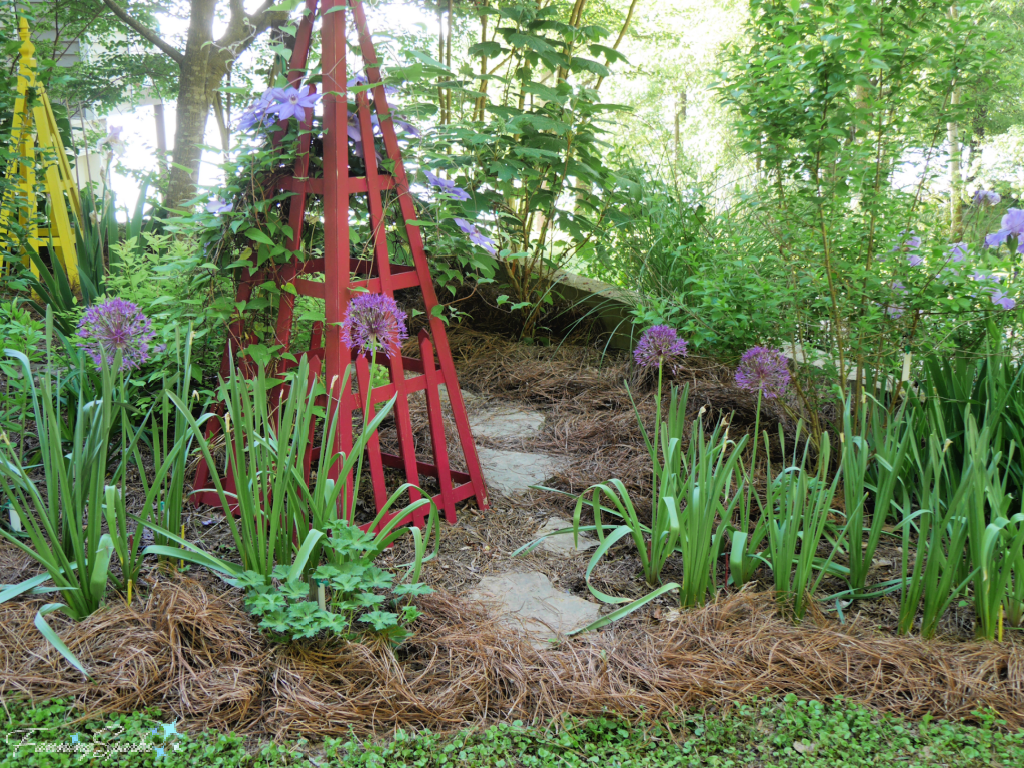
The leading contestants, Clematis ‘Ramona Blue’, purple bearded iris and Allium ‘Purple Sensation’, are trying their best to outdo each other. They’re colorful, flashy and glamorous!
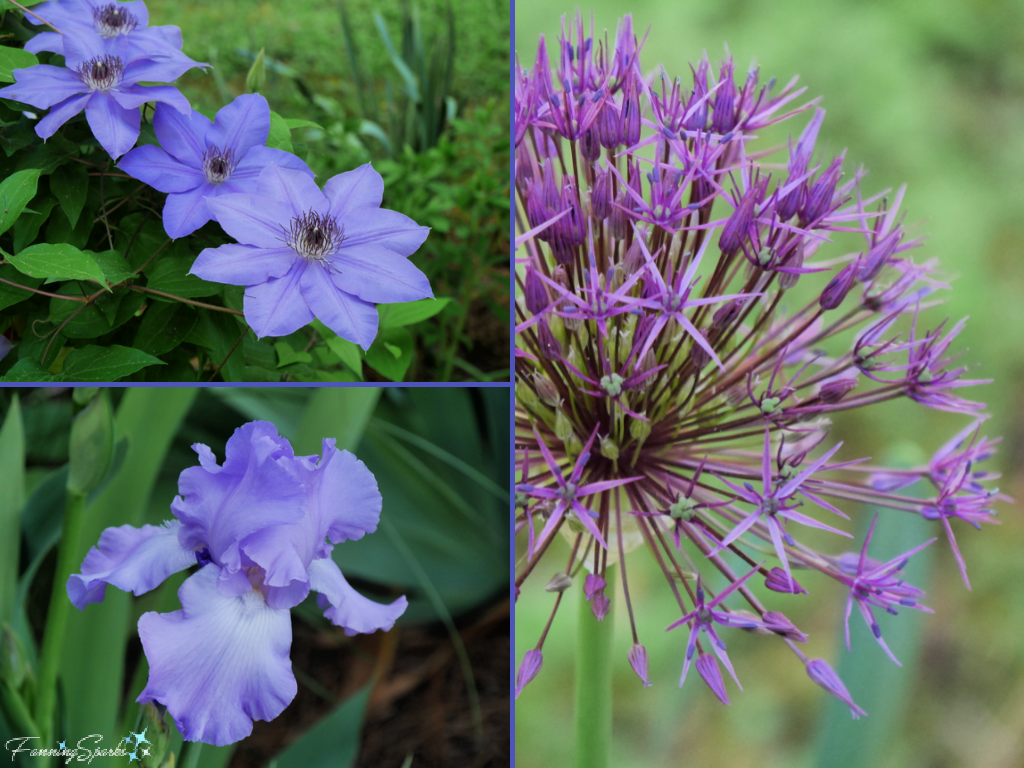
Meanwhile, the Spanish Lavender is more like Miss Congeniality with its gentle, low-key ways. It plays a strong supporting role with its small purple blooms and silvery-grey foliage.
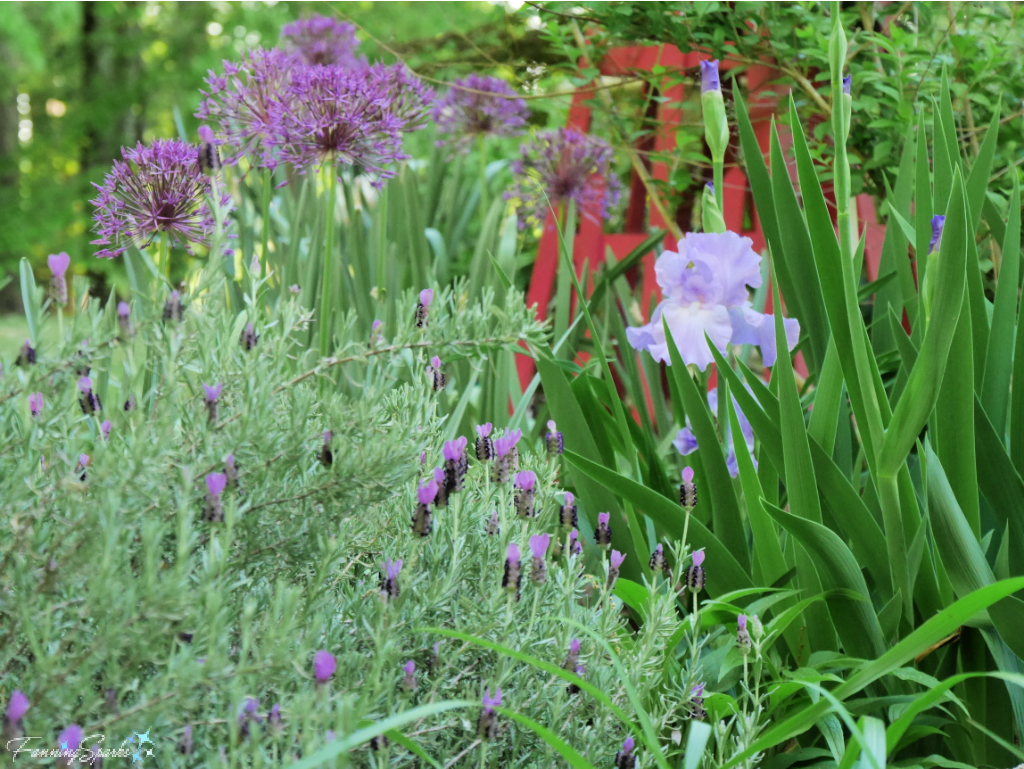
The Spanish Lavender (Lavandula stoechas ‘Otto Quast’) may not be as flamboyant as the others but it has something they don’t—staying power! Lavender is well-known for its sweet, floral scent. Author Tessa Evelegh, puts it this way: “As well as for its unmistakable perfume, lavender has been recognized since Roman times for its healing and antiseptic qualities, its ability to deter insects, and for washing.” (from Lavender Practical Inspirations for Natural Gifts, Country Crafts and Decorative Displays).
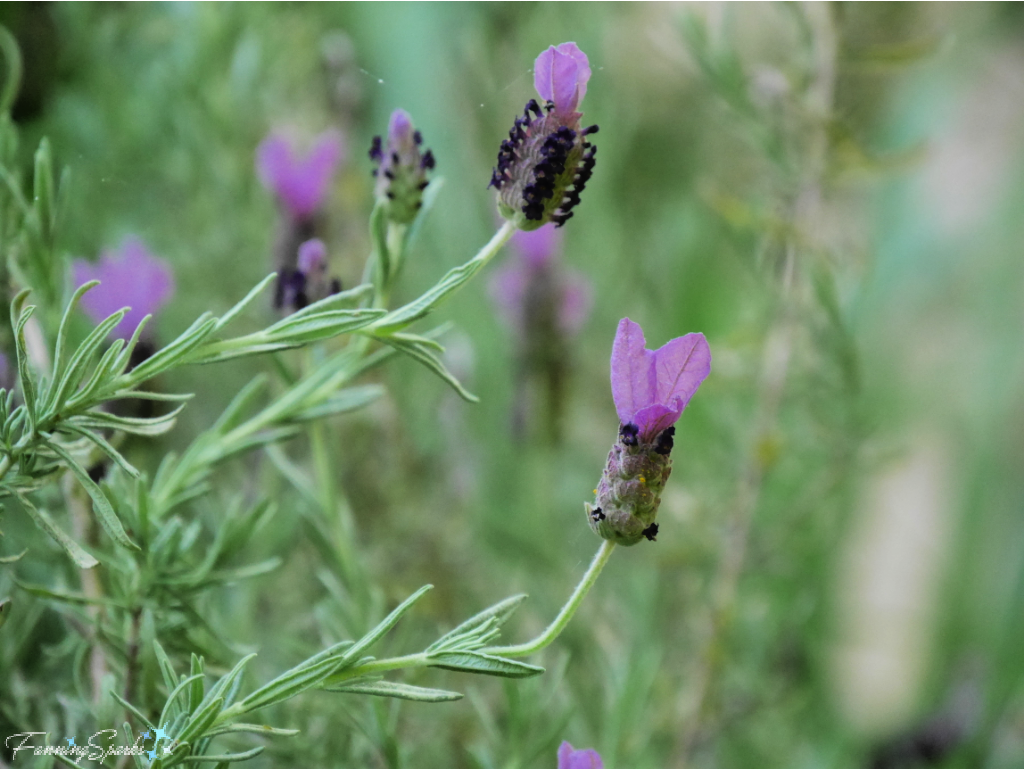
Fortunately, there are a number of ways to preserve the treasured aroma of lavender. Lavender stalks can simply be hung upside down to dry. The dried bouquets can be displayed as is or the blooms can be removed and used in a variety of ways such as sachets and pillows.
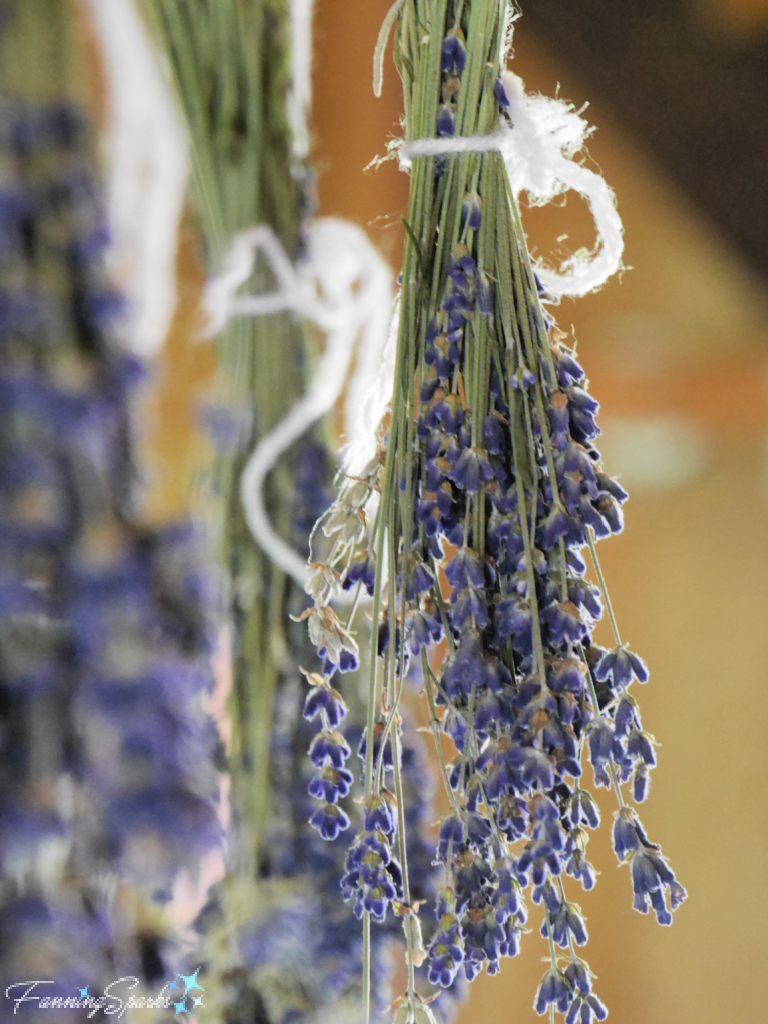
Another option for extending the life of this classic flower is to make lavender wands. These charming drawer and closet scenters are also known as “lavender bottles” and according to Tessa Evelegh “Young ladies in Victorian times used to while away afternoons making lavender bottles by encasing lavender heads in their own stalks, then weaving them with ribbon.”
The lavender flowers are hidden inside a small “cage” of interwoven stalks and ribbon. Dried blossoms will be held neatly inside the woven cage as they dry and shrink. Thus, the lavender wand can be placed inside a drawer or hung in a closet without strewing bits of dried lavender.

Lavender wands aren’t difficult to make once you know how. The first step is to gather the lavender stalks. It’s best to cut the lavender in the early morning before the heat of the sun can cause the lavender to release its scent.
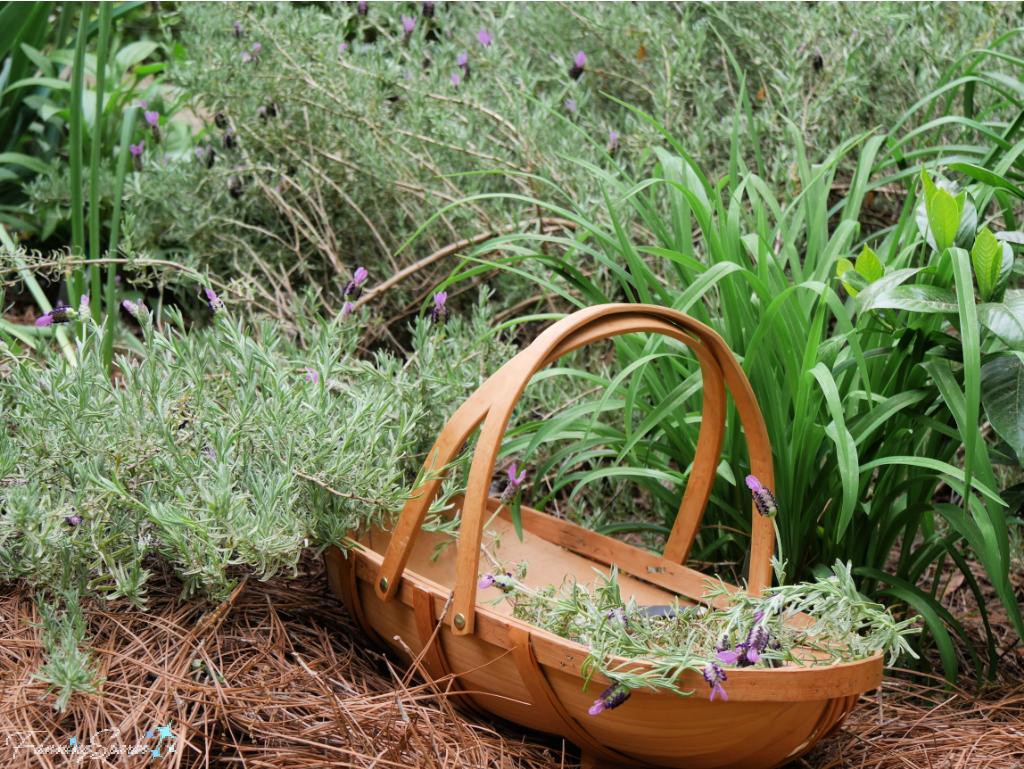
Cut an odd number of stems, at least SEVEN, about 12-18” long. One lesson I learned the hard way is the stems should be as straight as possible with at least 4” of new growth. The new growth is supple and easy to manipulate. In contrast, the old growth is woody and brittle making it near impossible to bend the stalks and tricky to weave the ribbon around them.
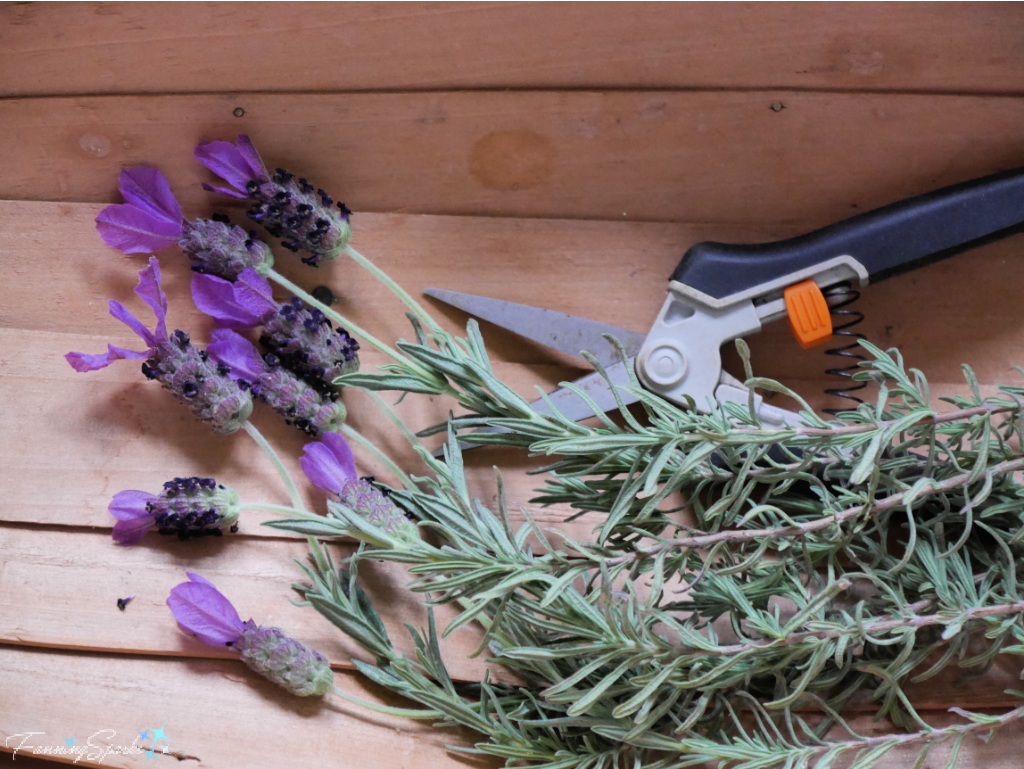
The only other supply you’ll need for this project is ribbon. I purchased a few different options in ⅜” and ¼” widths. The amount of ribbon needed will depend on the length of the lavender stalks and the size of bow you choose to make. I used about 4’ of ribbon to weave my lavender wand.
The steps to weave the lavender wand, as illustrated below, are:
Step 1. Remove the leaves from the lavender stalks.
Step 2. Align the base of the lavender flowers and tie the ribbon just below this point. Leave a ribbon tail of about 6”. Tie the ribbon in a firm knot but not so tight it will break the stems.
Step 3. Hold the bundle of lavender flowers in your nondominant hand. Then use your dominant hand to carefully bend a stalk at the base bringing it up and over the lavender flowers. Pass the bent stalk over to your nondominant hand. Slowly turn the bundle, bending one stalk at a time, so the stalks surround the lavender flowers. Tuck the ribbon tail inside the bundle. Begin to weave the long end of the ribbon between the stalks. Pull the ribbon over one stalk, then under the next stalk, over, under, over, under…
Step 4. Weave round and round the bundle taking care to keep the stalks in the same order and the ribbon smooth and flat. When you reach the bottom of the bundle, pull out the ribbon tail and tie a tight bow.

Wind the remaining ribbon around the stems and tie off. You may choose to add a loop or an additional bow in coordinating ribbon. There you have it! A lavender wand just like the Victorians used to make!

Yet another way to preserve lavender is to make a lavender basket (shown on the right below). The woven stalks and ribbon look similar to a lavender wand but, notably, the lavender heads are not enclosed.
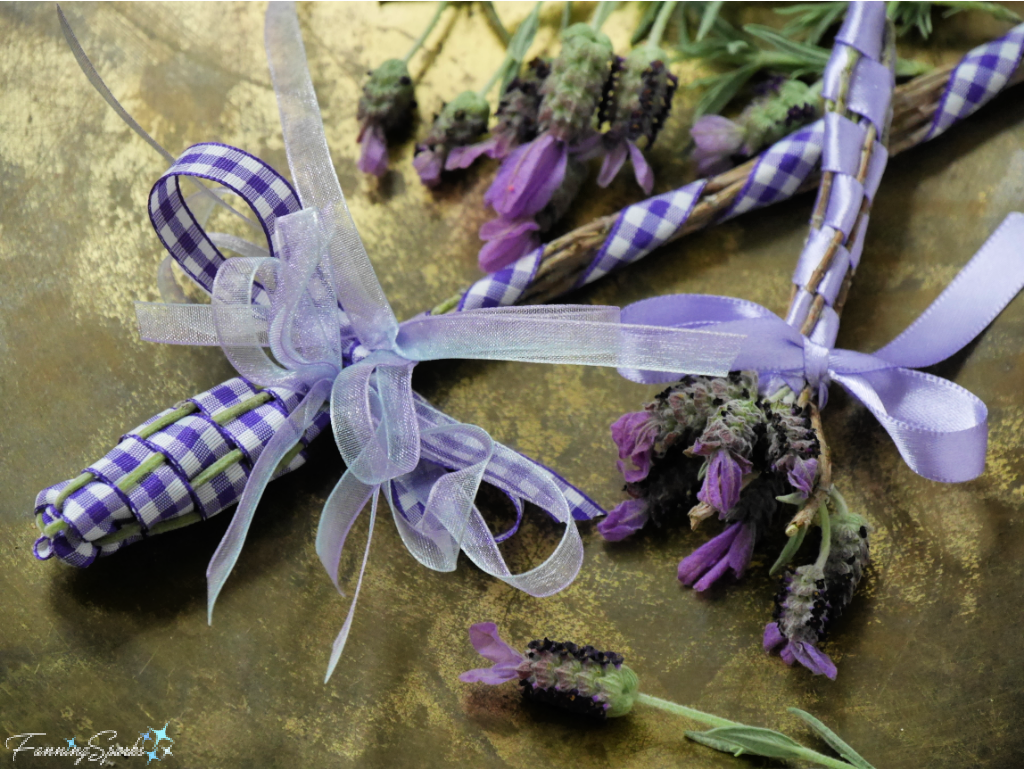
When making a lavender basket, instead of bending the stalks at the base of the flower heads, bend them about 5-7” below the base of the flowers and weave the ribbon around the stalks to made a handle of sorts. Trim the stalks after tying off the ribbon. It’s also possible to join a few long stalks above the basket to weave a loop handle.
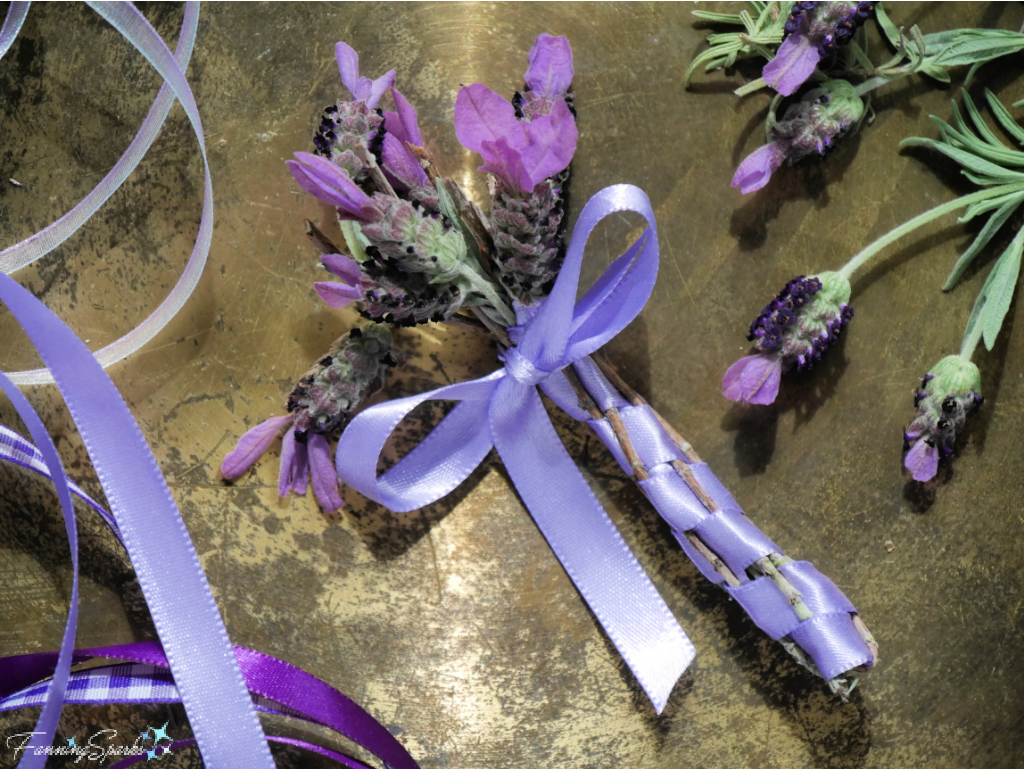
Whether you choose to weave lavender wands or lavender baskets, it’s a fun way to make something pretty and preserve that unmistakable lavender scent.
More Info
I’ve only used Spanish Lavender (Lavandula stoechas ‘Otto Quast’) to make lavender wands and baskets. I suspect using the long, upright stems of English Lavender, as shown below in my sister Marian’s garden, would be easier. She’s an accomplished gardener in addition to being a wonderful sister!
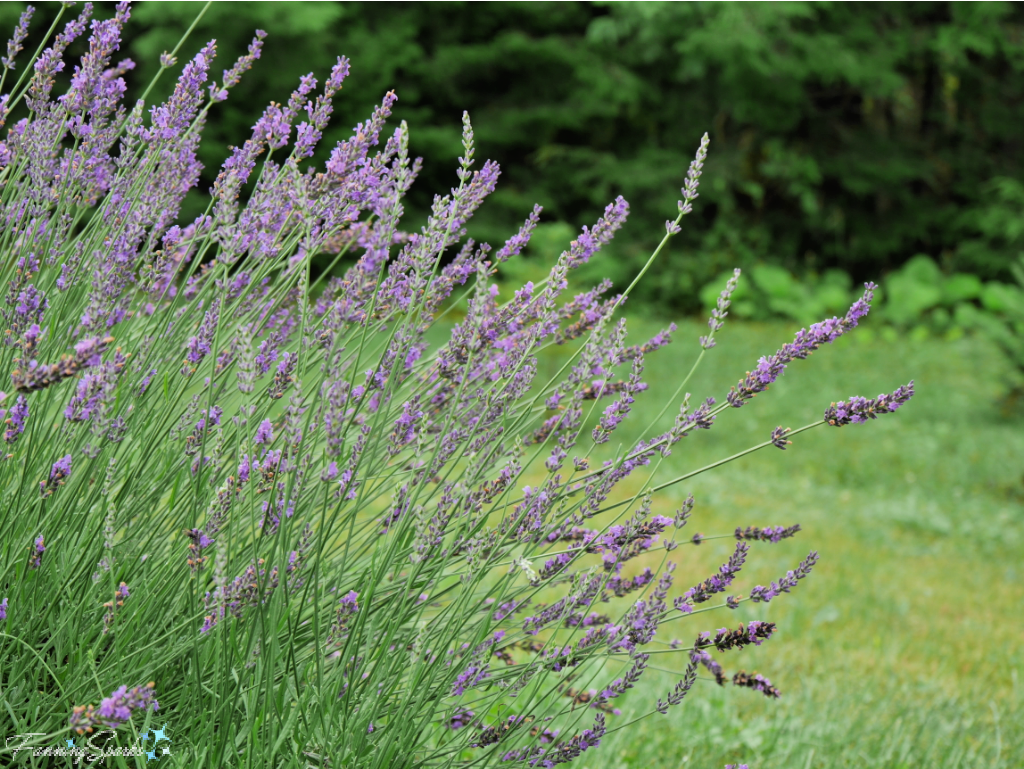
The book, Lavender Practical Inspirations for Natural Gifts, Country Crafts and Decorative Displays by Tessa Evelegh, contains a wealth of information about lavender. It is available online, at no charge, via Archive.org.
Today’s Takeaways
1. “As well as for its unmistakable perfume, lavender has been recognized since Roman times for its healing and antiseptic qualities, its ability to deter insects, and for washing.” Tessa Evelegh
2. Making lavender wands, with lavender blooms held in a cage of interwoven stalks and ribbons, dates back to Victorian times.
3. Consider weaving lavender with ribbon to preserve the blooms and scent of lavender.


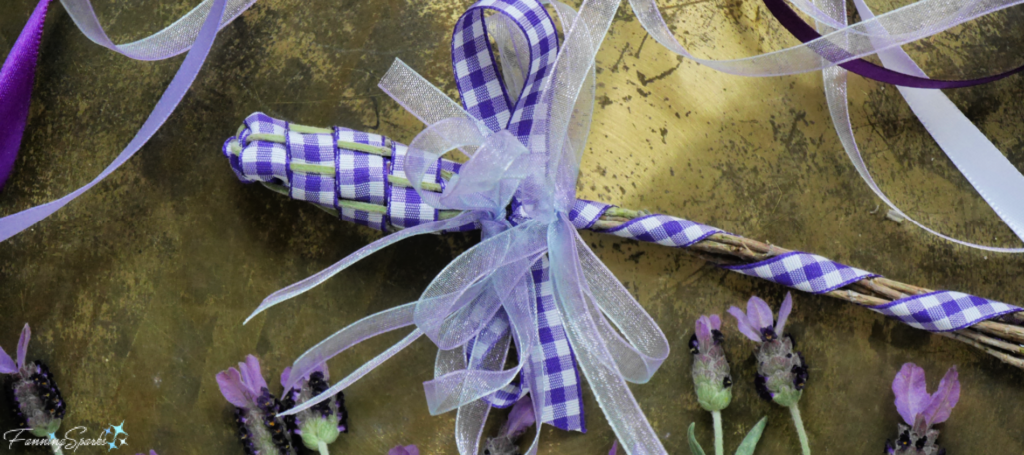


Comments are closed.